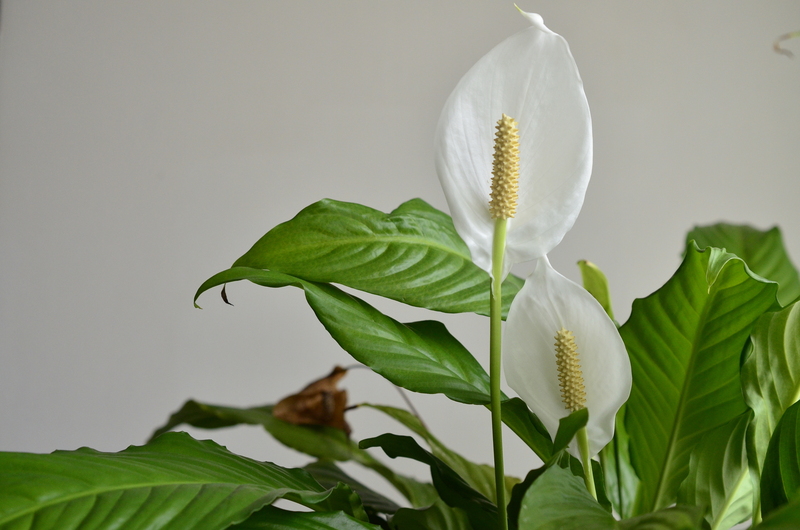Shade-Loving Evergreen Climbers: Your Secret Garden Ally
Posted on 19/05/2025

Shade-Loving Evergreen Climbers: Your Secret Garden Ally
Imagine having a verdant and lush garden even in the shadiest parts of your yard. With shade-loving evergreen climbers, this can be your reality. These resilient and versatile plants not only enhance the aesthetic appeal of your garden but also bring life to areas that rarely see the sun. In this article, we explore everything you need to know about these secret garden allies.
Why Choose Evergreen Climbers?
Choosing plants for shaded areas can be a daunting task. However, evergreen climbers are ideal for these spots. They are resilient, provide year-round foliage, and often require less maintenance compared to other types of plants. The benefits of evergreen climbers include:
- **Year-round greenery**: Unlike deciduous plants, evergreens keep their leaves all year, ensuring your garden isn't bare in winter.
- Low maintenance: Once established, these climbers need minimal attention, making them ideal for busy gardeners.
- **Vertical growth**: They efficiently use vertical spaces, perfect for small gardens.
- Shade tolerance: Many varieties thrive in low-light conditions, turning dull areas into lush landscapes.
Understanding Shade Conditions
Before delving into specific plant choices, it's crucial to understand the shade conditions in your garden. Shade can vary from light to dense, and knowing the level of shade will help in selecting the right evergreen climbers. Here are common types of shade:
- Full shade: Areas that receive less than two hours of sunlight daily.
- **Partial shade**: Places that enjoy two to six hours of sun typically in the morning or late afternoon.
- Dappled shade: Light that filters through tree leaves, offering a soft, scattered effect.
Top Shade-Loving Evergreen Climbers
1. Ivy (Hedera)
Ivies are popular shade-loving climbers known for their hardiness and adaptability. With over 12 species, they can thrive in a variety of shade conditions. English ivy is a classic choice, providing a dense cover and attractive foliage. It's ideal for covering walls, fences, and trellises.
2. Climbing Hydrangea (Hydrangea petiolaris)
Famed for its beautiful, white, lace-cap flowers, the climbing hydrangea prefers partial to full shade. Unlike other climbers that may appear messy, it grows in an organized manner. Its aerial rootlets attach to surfaces, allowing it to climb walls and tree trunks gracefully.
3. Japanese Honeysuckle (Lonicera japonica)
This vigorous climber features lush foliage and sweetly scented, tubular flowers. While Japanese honeysuckle grows well in full sun, it can also adapt to shaded environments. Be cautious, as it can become invasive if not managed properly.
4. Clematis Armandii
An early-flowering evergreen clematis, Clematis Armandii boasts creamy white, fragrant blooms. It's perfect for adding scent and beauty to shaded areas. Provide it with a sturdy support structure, as it can become weighty when mature.
5. Star Jasmine (Trachelospermum jasminoides)
Despite its preference for sunnier spots, star jasmine can tolerate shade, especially during the hottest part of the day. Known for its glossy leaves and star-shaped, fragrant flowers, it can transform shaded walls and fences into stunning vertical gardens.
Tips for Planting and Caring for Evergreen Climbers
Soil Preparation
While shade-loving climbers are resilient, preparing the soil can make a difference in their growth. Ensure the soil is well-drained yet retains moisture. Amending it with organic matter such as compost can improve its structure and nutrient content.
Watering
Most evergreen climbers have deep root systems allowing them to access water efficiently, though newly planted climbers will need regular watering until established. Pay attention to the soil's moisture level, as overwatering can lead to root rot.
Pruning and Training
Pruning helps maintain the health and shape of your climbers. Remove dead or damaged growth regularly and train the plants to grow on your chosen structure. Tying branches gently to support can help direct their growth appropriately.
Pest and Disease Management
While many evergreen climbers are disease-resistant, it's still vital to monitor for pests like aphids and scale insects. Employing natural predators or organic treatments will help control infestations.
Conclusion
Transforming your shady garden areas doesn't have to be challenging. With the right choice of evergreen climbers, you can create a lush and inviting outdoor haven. Remember to consider the type of shade, plant requirements, and care strategies to ensure success. By embracing these secret garden allies, your garden can remain vibrant and alive all year round.




